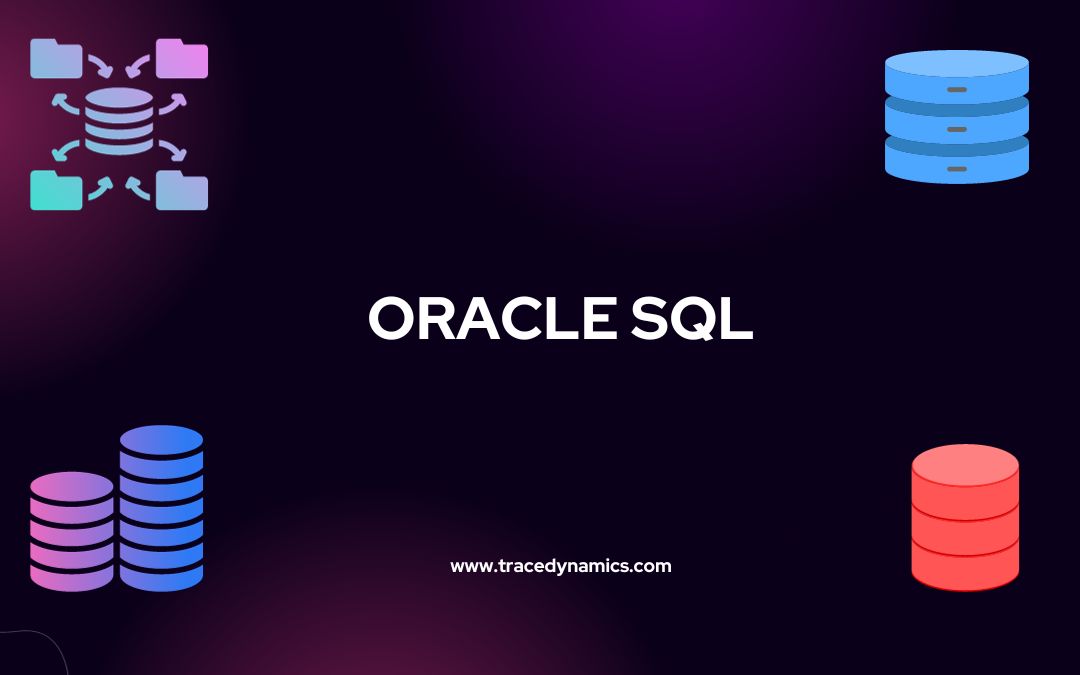Oracle SQL accommodates simple, classic, robust architecture for accessing, defining, and maintaining data.
What is Oracle SQL?
Oracle SQL (Structured Query Language) is the combination of statements with all programs and users access data in an Oracle database.
Application-specific programs and Oracle tools allow users access to the respective database without querying directly, but these applications must use SQL internally when executing the user’s request.
Oracle SQL Key Features:
- Oracle SQL offers ANSI SQL Compliance.
- Extensions for PL/SQL and Java.
- Multiversion read consistency.
- High performance by utilizing indexes, partitioning, in-memory optimization.
- Text and Spatial data support.
- Analytic SQL for powerful queries.
Manage Database Users in Oracle:
In order to create a database user in Oracle, first, we’ll need to log in as sys or system.
Once you log in, the create user command is
create user identified by "password";create user data_editor identified by "John";Since we created a user, the next step is to connect to the created user.
conn data_editor/John!
ORA-01045: user DATA_OWNER lacks CREATE SESSION privilege;
logon denied.Oops! Why was it not connecting? The issue is you haven’t provided the user with permissions.
By default, a database user has no privileges. Switch to the next section about granting user privileges.
Granting & Revoking User Privileges:
User permissions can be provided by using the grant command.
grant privilege to user;In order to allow a user to log in, we need to give “create session” privilege to the user.
grant create session to data_editor;Now coming to role permission, let’s give a “CREATE TABLE” role which allows the user to create a table.
grant create table to data_editor;However, there are powerful ORACLE roles available, which can be granted on the basis of role and operations expected from the user.
In order to remove the role of user, the following syntax has to be applied.
revoke privilege from user;revoke create table from data_editor;Similarly, in order to remove a user, the following syntax has to be applied/
drop user username;drop user data_editor;Storing/Modifying Data in Database
In order to store the data in tables, first, we need to create a table in the database.
‘CREATE TABLE’ statement will be used to create a new table in the database.
Syntax for table creation:CREATE TABLE TABLE_NAME (
COLUMN1_NAME DATA_TYPE,
COLUMN2_NAME DATA_TYPE,
COLUMN3_NAME DATA_TYPE,
...
);CREATE TABLE EMPLOYEE (
EMPLOYEE_NAME VARCHAR2(10),
ADDRESS VARCHAR2(20),
);If we need to alter a table like adding extra columns, then we will be using the ALTER TABLE statement.
Oracle ALTER TABLE statement will be used to add, modify, or drop/delete columns in a table. The Oracle ALTER TABLE statement can also be used to rename a table.
Syntax:ALTER TABLE TABLE_NAME ADD (COLUMN_NAME DATA_TYPE);ALTER TABLE EMPLOYEE ADD (STATE VARCHAR2(10));Similarly, we can drop the column using the ALTER TABLE statement.
Syntax:ALTER TABLE TABLE_NAME DROP (COLUMN_NAME);ALTER TABLE EMPLOYEE DROP (ADDRESS);Accessing Data in Database – SELECT
In order to access data in the database, it all starts with SELECT.
The purpose of the SELECT statement is to pull/retrieve data from one or multiple tables, views, object views, object tables, analytic views, materialized views.
Syntax:SELECT * FROM "TABLE_NAME";SELECT * FROM EMPLOYEE;If we need to use the SELECT statement using WHERE condition then
Syntax:SELECT * FROM "TABLE_NAME" WHERE "COLUMN_NAME" = "Value";SELECT * FROM EMPLOYEE WHERE EMPLOYEE_NAME = "John";Frequently Asked Questions (FAQs)
What is Oracle SQL?
Oracle SQL is a version of SQL used in Oracle Database, offering robust data management, querying, and manipulation capabilities.
How do I create a new user in Oracle SQL?
You can create a new user using the ‘CREATE USER’ statement followed by the username and authentication details.
What are the key features of Oracle SQL?
Key features include ANSI SQL compliance, PL/SQL and Java extensions, high performance, and support for complex queries.
How can I optimize queries in Oracle SQL?
Optimizing queries can be achieved through indexing, partitioning, and using efficient query structures.
What is PL/SQL in Oracle?
PL/SQL is Oracle’s procedural extension to SQL, allowing you to write full programs to perform complex data manipulations.
How do I handle transactions in Oracle SQL?
Transactions are managed using the ‘COMMIT’, ‘ROLLBACK’, and ‘SAVEPOINT’ statements for data integrity.
What are Oracle SQL's data types for handling large objects?
Oracle SQL handles large objects with LOB data types, including BLOB, CLOB, NCLOB, and BFILE.
Can Oracle SQL handle JSON and XML data?
Yes, Oracle SQL supports XMLType and JSON data types for managing XML and JSON data.
How do I implement data security in Oracle SQL?
Data security is implemented using roles, privileges, and access controls to ensure data integrity and confidentiality.
What is Oracle SQL's approach to data backup and recovery?
Oracle SQL provides robust data backup and recovery solutions, including RMAN and Data Pump.

